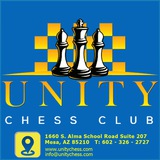📘 10.h3 may not be the most precise move. Top players such as Kramnik, Grischuk, Kamsky and Eljanov have preferred to play 10.Nxg6.
After 10.h3 black can try 10...Be4!? and now if 11.Nxe4 dxe4!, and Nh4 is in trouble.
If 11.f3 Bg6 black has managed to create some weaknesses on the dark squares in whites camp.
After 10.h3 black can try 10...Be4!? and now if 11.Nxe4 dxe4!, and Nh4 is in trouble.
If 11.f3 Bg6 black has managed to create some weaknesses on the dark squares in whites camp.
📘 12...Bd8 with the idea of exchanging white's active bishop on f4 and getting the two bishops advantage from white. Motylev arrived at this position in his game against Grischuk in 2015 and played the text move. An interesting alternative was 12...Nh5!? 13.Bh2 Bg5 with the idea of Bf4 or 13...g5 with the idea of Nf4.
📘 7...Nc7
Preventing d4 and heading for Maroczy bind with reverse colors. Botvinnik has successfully played this variation, with different move orders, as black with easy victories in 30s and 40s, when opponents were not familiar with the typical plans of playing against the Maroczy bind. Clearly, 7...e5?? was not possible due to 8.Nxe5!.
Preventing d4 and heading for Maroczy bind with reverse colors. Botvinnik has successfully played this variation, with different move orders, as black with easy victories in 30s and 40s, when opponents were not familiar with the typical plans of playing against the Maroczy bind. Clearly, 7...e5?? was not possible due to 8.Nxe5!.
📘 9.Nd2 with the idea of destructing black's pawn structure on the queenside by Bxc6 at the cost of giving up two bishops and some weaknesses on the kingside.
9...Bd7
Black preferered to avoid doubled pawns at the cost of playing the inactive Bd7. 9...0-0 was a playable alternative. Black hopes to develope some attacking ideas on the kingside if white takes on c6. Maybe it was more exact for white to play Nd2 before castling.
10.Nc4 f6 11.f4 or 11.a4 with the idea of f4 with some initiative for white.
9...Bd7
Black preferered to avoid doubled pawns at the cost of playing the inactive Bd7. 9...0-0 was a playable alternative. Black hopes to develope some attacking ideas on the kingside if white takes on c6. Maybe it was more exact for white to play Nd2 before castling.
10.Nc4 f6 11.f4 or 11.a4 with the idea of f4 with some initiative for white.
📘 4...Nd4!?
This intetesting move was introduced to top level by Victor Kortschnoj in 1972. The idea is to play c6 in future to cover d5, limit Nc3 and reduce the pressure of Bg2 over the long diagonal. It is dubious to take e5:
5.Nxe5?! Qe7 6.f4 (6.Nd3?? Nf3#) 6...d6 7.Nd3 Bf5 winning a tempo by attacking Nd3 and preparing to casle long and push the h pawn with at least full compensation for the pawn. It is clear that 4...Nd4 can be best responded by 5.Bg2.
It is interesting that after Svidler played Korstchnoj's idea against him in 2001, Kortschnoj did not manage to respond properly and lost in just 27 moves by playing 5.Nh4?! d5! 6.e3?! Nc6 7.cxd5 Nxd5 8.d3?! Be7 9.Nf3 0-0 10.Bg2 Ndb4 11.Ke2 Be6!-/+ to respond 12.a3 with Bb3.
This intetesting move was introduced to top level by Victor Kortschnoj in 1972. The idea is to play c6 in future to cover d5, limit Nc3 and reduce the pressure of Bg2 over the long diagonal. It is dubious to take e5:
5.Nxe5?! Qe7 6.f4 (6.Nd3?? Nf3#) 6...d6 7.Nd3 Bf5 winning a tempo by attacking Nd3 and preparing to casle long and push the h pawn with at least full compensation for the pawn. It is clear that 4...Nd4 can be best responded by 5.Bg2.
It is interesting that after Svidler played Korstchnoj's idea against him in 2001, Kortschnoj did not manage to respond properly and lost in just 27 moves by playing 5.Nh4?! d5! 6.e3?! Nc6 7.cxd5 Nxd5 8.d3?! Be7 9.Nf3 0-0 10.Bg2 Ndb4 11.Ke2 Be6!-/+ to respond 12.a3 with Bb3.
📘 59.a7
59.Ra7 couldn't change the result.
59.Ra7 g4! the easiest way to make a draw is to exchange pawns.
60.hxg4 Kxg4 61.Kh2 Kg5! 62.Ra8 Kg6 63.a7 Kg7=
Even if white takes the h pawn position is drawn.
59.Ra7 couldn't change the result.
59.Ra7 g4! the easiest way to make a draw is to exchange pawns.
60.hxg4 Kxg4 61.Kh2 Kg5! 62.Ra8 Kg6 63.a7 Kg7=
Even if white takes the h pawn position is drawn.
📘 19.Rg1
In a winning position for white, players agreed on a draw. For instance:
A: 19...Rxh2? 20.Rxg2! Rxg2 21.Bxf6 Kxf6 22.Qf3++-
B: 19...Bb7 20.d5! threatening Qf3 and Qc3
C: 19...Be4 20.Rg4! Bf5 (20...Bb7 21.Rf4+-) 21. Qxa7+-
In a winning position for white, players agreed on a draw. For instance:
A: 19...Rxh2? 20.Rxg2! Rxg2 21.Bxf6 Kxf6 22.Qf3++-
B: 19...Bb7 20.d5! threatening Qf3 and Qc3
C: 19...Be4 20.Rg4! Bf5 (20...Bb7 21.Rf4+-) 21. Qxa7+-
📘 28.Ne5+! f×e5 29.Q×g6+! K×g6 30.B×e7 +-
It is interesting that the Iranian GM has managed to make a draw out of this position!
It is interesting that the Iranian GM has managed to make a draw out of this position!
